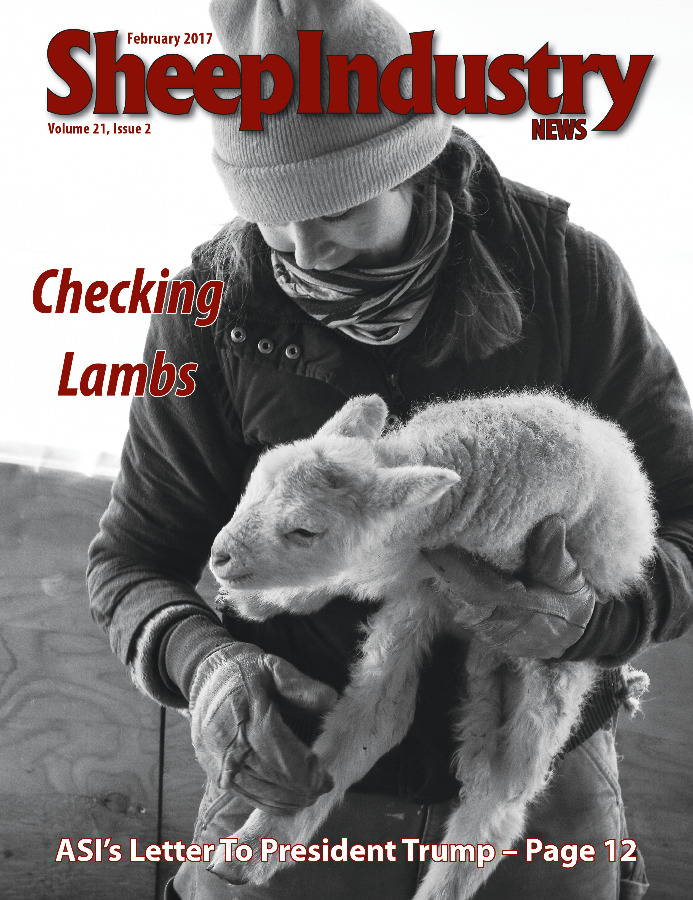Tips For Writing A Let’s Grow Grant
Alan Culham
ASI Let’s Grow Coordinator
Writing a successful grant application isn’t easy, but it’s far from impossible. Gleaned from four rounds of Let’s Grow grants, the following thoughts might increase the chances of your application being selected for funding by the review committee.
Origination of the Let’s Grow Grant
To be successful in securing funding, one must first understand the purpose of a Let’s Grow grant. The program originated as a tool to address the implementation of the productivity piece of the Sheep Industry Roadmap. Funded by the use of checkoff dollars from the American Lamb Board, the Roadmap was created to address the following key goals:
• Improve the quality and consistency of American lamb.
• Increase demand for American lamb.
• Improve industry productivity to remain competitive.
• Improve industry collaboration.
ASI volunteered to shepherd the productivity piece, stepping forward with a $1.5 million investment into the industry by funding grants designed to meet the goals established by the productivity committee, as well as hiring a Let’s Grow project coordinator. The goals spelled out in the productivity portion of the roadmap are:
• Promote widespread producer use of quantitative genetic selection.
• Support a national initiative to establish and support producer groups who are committed to improving productivity and profitability.
• Develop a long-term plan for U.S. sheep research and producer education.
A detailed presentation of the Sheep Industry Roadmap can be viewed at Lambresourcecenter.com/app/uploads/2015/09/Lamb-Industry-Roadmap-10-Dec-13.pdf
The third goal has been accomplished by the ASI Production, Education and Research Council. Understanding these industry goals is fundamental to writing a successful Let’s Grow grant application.
Criteria Evaluated For Funding
Applications for Let’s Grow funding are evaluated by ASI’s Let’s Grow Committee. In 2016, the committee assumed the responsibilities of the previous Roadmap Productivity Committee. This group’s mission is, “To support, promote and ensure the U.S. sheep industry’s future through the development of innovative and sustainable initiatives that increase the productivity, profitability and growth of the American sheep industry, which will further enhance domestic wool and lamb production.”
High Priorities for Grant Funding
• Projects and programs that support the Sheep Industry Roadmap Productivity Goals.
• Projects and programs that support the mission of the Let’s Grow Committee.
• Projects and programs that have national, multi-state and regional impact.
• Projects and programs that have long-term productivity advancing implications.
• Concepts that contribute to strengthening industry infrastructure needs.
• Projects and programs that improve seasonality of supply, reduce market volatility and drive the industry’s ability to deliver a more uniform, consistent lamb and wool product to customers, and ultimately consumers.
When applying for a Let’s Grow grant, success is often dependent on the number of these goals and priorities the proposal addresses. Contrary, there are items the committee prefers not to be involved in funding.
Low Priorities for Grant Funding:
• The purchase of equipment, buildings, sheep and other capital items tied to a single operation – personal assets and assets with limited use.
• Travel to conventions and conferences.
• Payment of convention and conference registration fees.
• Becoming an alternate funding source for already existing programs.
• Food for particpants.
Sometimes low priorities are essential parts of a proposal, but the committee encourages the applicant to seek alternative funding sources for these items (or contribute them to the project in the form of matching funds). Matching funds are not required for a Let’s Grow grant, but are taken into consideration.
Other considerations
Sometimes, other circumstances come into the decision making process. There is not a one-size-fits-all grant application. One proposal might be new and unique for one region of the country where the same proposal might be business as usual for another. The selection committee tries to gauge the potential impact a proposal might have for increasing productivity of the industry in a region.
Another limitation is that ASI dollars used to fund Let’s Grow grants originate from the Wool Trust. These dollars are limited to funding wool quality and sheep productivity improvement. These resources are not available for use to develop or improve lamb products or lamb marketing strategies. Grants incorporating these often worthwhile proposals are forwarded to the American Lamb Board or National Sheep Industry Improvement Center as funding sources.
Research funding is limited to those projects that are more applied in nature. The committee requires that there is an information delivery system included to disseminate the findings to producers.
Proposals that introduce proven research and technology to producers in the form of on ranch/farm field trials are greatly preferred.
Big, Hairy, Audacious Goals
Thinking out of the box is appreciated. Extremely bold or daring ideas are sought. Original, highly inventive proposals without the restriction of prior norms might be the ones that can change productivity and profitability of our industry most dramatically.
In the words of former Let’s Grow chairman Mike Corn, “Our Let’s Grow program is a great way to find positive ways to break traditional ways of doing business, to make better the industry that we all love and want to make money doing. We must find ways to keep up with a changing world market and our focus is to help lead us into the future.”
Round Five Timeline
Round five applications will be available online by Feb. 15 at Sheepusa.org/Growourflock_Funding. Applications for funding are due in to the committee by April 20. The Let’s Grow Committee will then meet on May 8-9 to review all applications.


